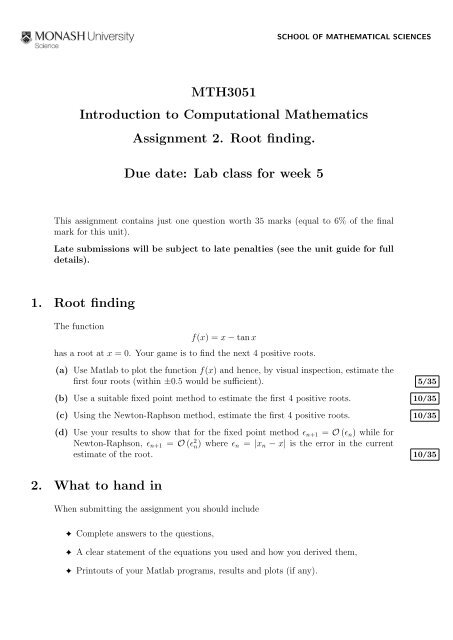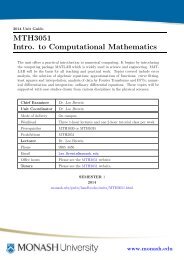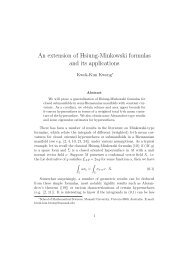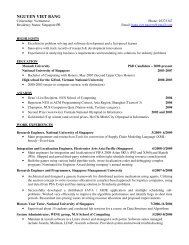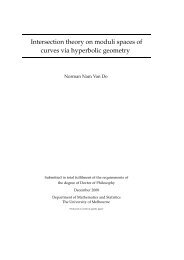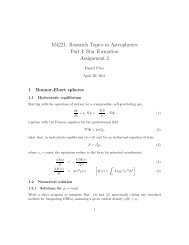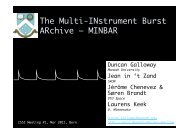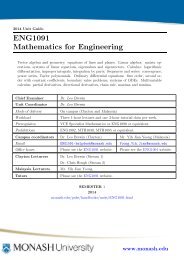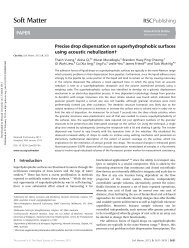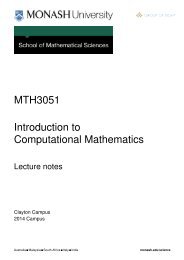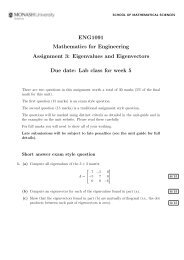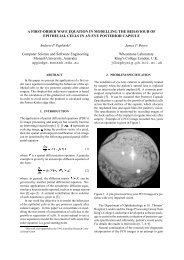MTH3051 Introduction to Computational Mathematics Assignment 2 ...
MTH3051 Introduction to Computational Mathematics Assignment 2 ...
MTH3051 Introduction to Computational Mathematics Assignment 2 ...
You also want an ePaper? Increase the reach of your titles
YUMPU automatically turns print PDFs into web optimized ePapers that Google loves.
SCHOOL OF MATHEMATICAL SCIENCES<strong>MTH3051</strong><strong>Introduction</strong> <strong>to</strong> <strong>Computational</strong> <strong>Mathematics</strong><strong>Assignment</strong> 2. Root finding.Due date: Lab class for week 5This assignment contains just one question worth 35 marks (equal <strong>to</strong> 6% of the finalmark for this unit).Late submissions will be subject <strong>to</strong> late penalties (see the unit guide for fulldetails).1. Root findingThe functionf(x) = x − tan xhas a root at x = 0. Your game is <strong>to</strong> find the next 4 positive roots.(a) Use Matlab <strong>to</strong> plot the function f(x) and hence, by visual inspection, estimate thefirst four roots (within ±0.5 would be sufficient). 5/35(b) Use a suitable fixed point method <strong>to</strong> estimate the first 4 positive roots. 10/35(c) Using the New<strong>to</strong>n-Raphson method, estimate the first 4 positive roots. 10/35(d) Use your results <strong>to</strong> show that for the fixed point method ɛ n+1 = O (ɛ n ) while forNew<strong>to</strong>n-Raphson, ɛ n+1 = O (ɛ 2 n) where ɛ n = |x n − x| is the error in the currentestimate of the root. 10/352. What <strong>to</strong> hand inWhen submitting the assignment you should include✦ Complete answers <strong>to</strong> the questions,✦ A clear statement of the equations you used and how you derived them,✦ Prin<strong>to</strong>uts of your Matlab programs, results and plots (if any).
School of Mathematical SciencesMonash UniversityMarks will be awarded for correctness as well as elegance (in particular how well youdocument the working of your Matlab programs. It should be easy for any body <strong>to</strong>read and understand your program. So use well chosen comments, but not so detailedthat it becomes hard <strong>to</strong> find the code!). But, and this is important, do not rely onthe comments in your Matlab code as the primary place in which you describe youralgorithm. There should be a separate discussion of the algorithm including any newequations you derived. This discussion should clearly describe your algorithm.Marks will be lost for poorly written programs, lack of clear and meaningfulcomments, and for an inadequate discussion.16-Feb-2014 2


